Financial Education
FutureSmart:
Financial Literacy
- Build Your Blueprint
- Growing a Business
- Investing in You
- Smart Shopping
- Ways to Pay
- Welcome Mayor!
- Your Financial Future
Why Adopt This Course?
Build financial confidence during these critical decision-making years with engaging, story-based learning that connects to students’ lives. Created by educators who understand middle school classrooms, FutureSmart uses interactive scenarios to help students practice smart spending, saving, and entrepreneurship skills through realistic situations they’ll actually encounter. Every lesson is designed to fit seamlessly into your social studies, business, or advisory curriculum with minimal prep time required. FutureSmart is made available at no cost due to the generous support of the MassMutual Foundation.
At-A-Glance
Grade Level
6th, 7th, 8thLength
7 digital lessons, 25 mins each
Languages
Standards
Jump$tart Coalition’s National Standards for K-12 Personal Finance Education, National Curriculum Standards for Social Studies, State Academic Standards
Curriculum Fit
Economics, Business or Social Studies, and Career Readiness
Students step into the role of mayor, immediately engaging with the storyline while discovering their personal financial personality and priorities.
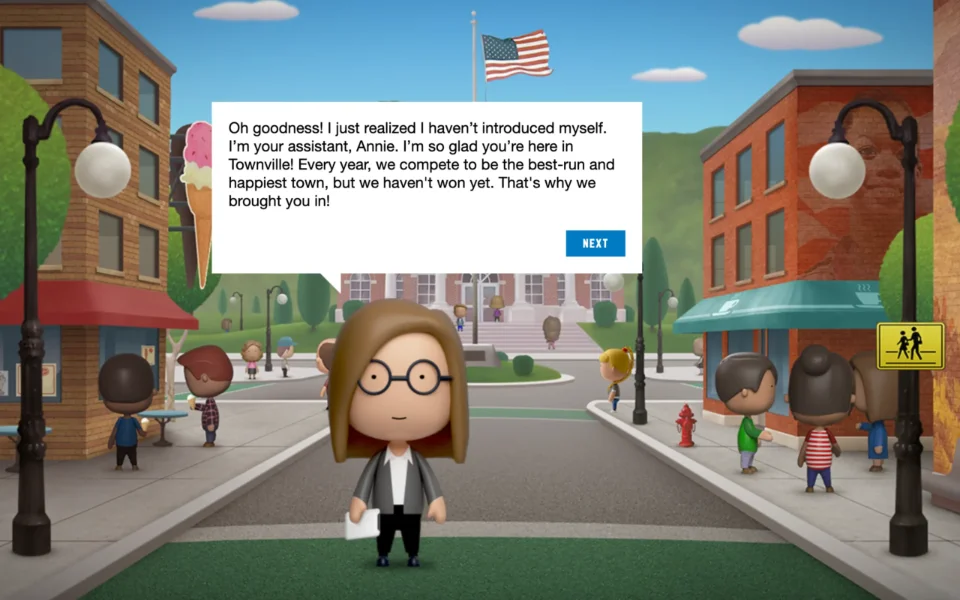
Students practice making spending decisions as they learn to compare prices, evaluate needs vs. wants, and make smart consumer choices.

Students learn both the importance of saving and how to manage day-to-day expenses. They also help a character find a job, review his paycheck and credit card statement, and decide when to utilize different payment types.
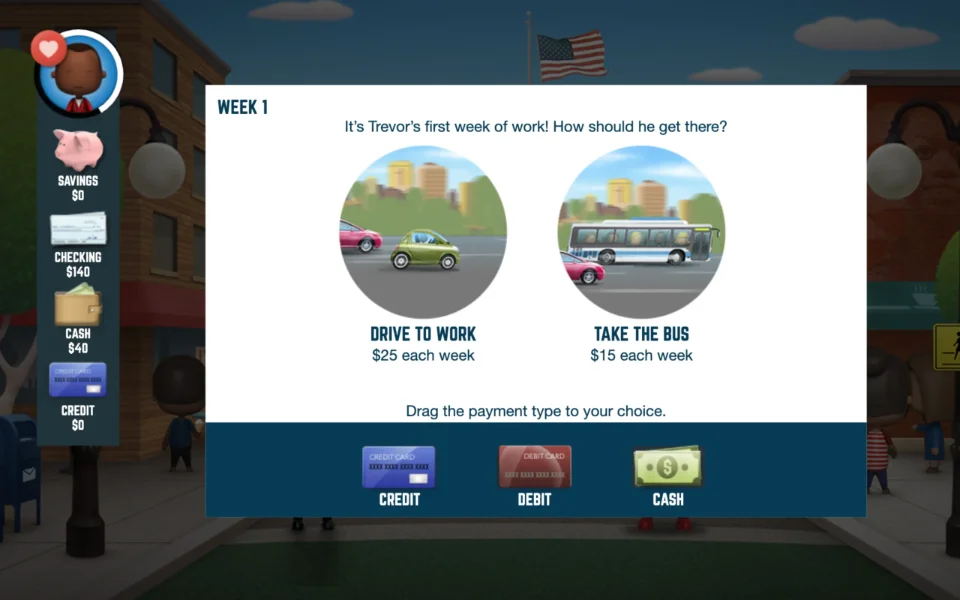
Students help a character explore different career path options and narrow her interests by examining required skills and interests, income potential, and education and training requirements. They also explore ways to reduce out-of-pocket cost of higher education.
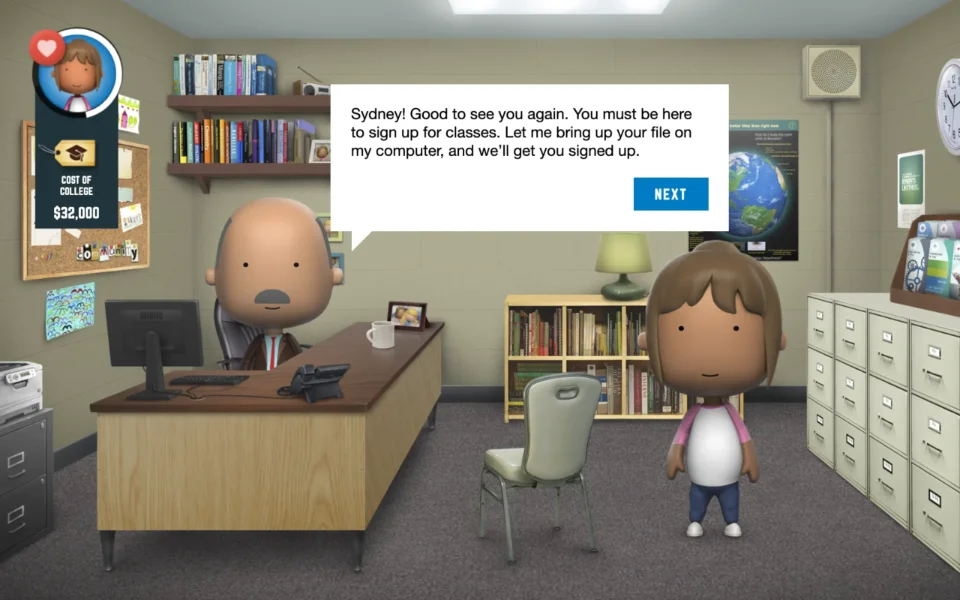
Students explore entrepreneurship by starting their own virtual business, learning about profit, expenses, and business decision-making.
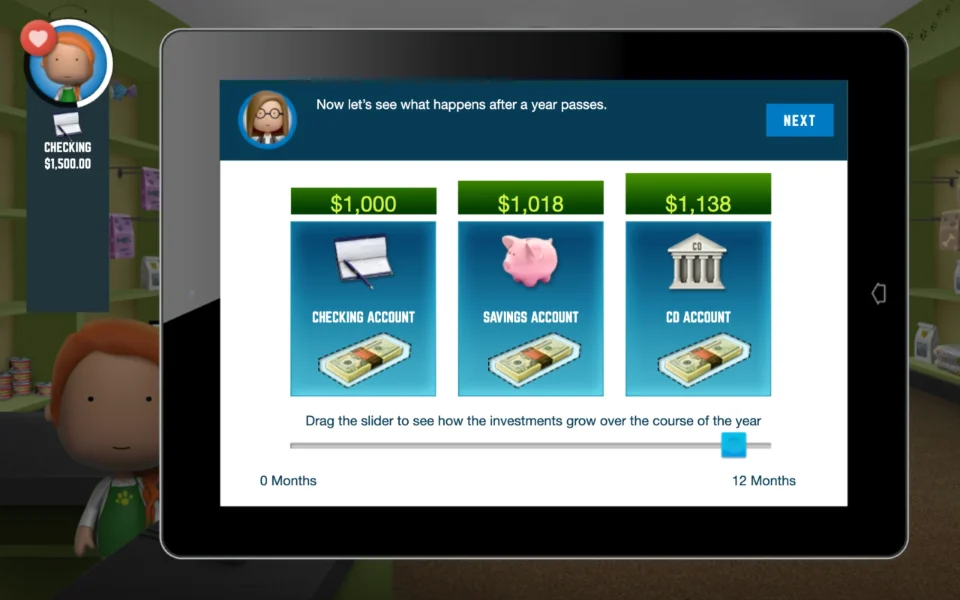
Students explore a “life simulation” and support a character make important insurance and investment decisions. Through helping the character analyze and select different insurance policies, students get the chance to experience just how random, unexpected occurrences can lead to financial loss.
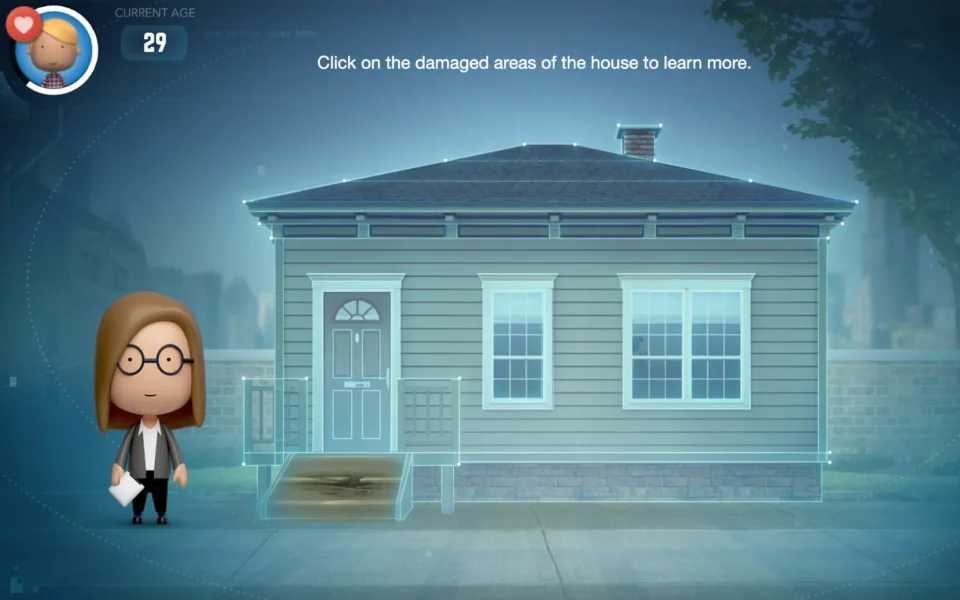
The course comes full circle in this final lesson, as students utilize their newfound knowledge to set their own financial goals and plans. Students create a portfolio piece, known as their “Blueprint,” which details future career interests, plans for higher education, and next action steps.
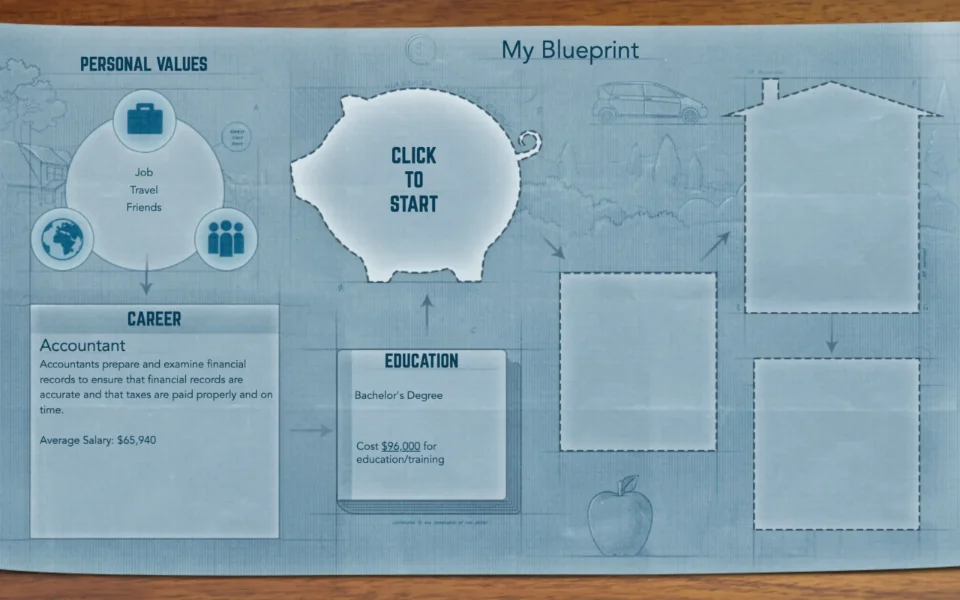
video
video
-
Less than a third of high school juniors and seniors reported that they felt prepared to compare financial institutions and select one that best meets their needs (32%). Slightly more students — but still less than half (47%) — felt they could select, open, and manage a savings or checking account.
Young people also reported low levels of confidence in their ability to establish financial habits that contribute to long-term financial wellbeing: budgeting and managing credit. Half of juniors and seniors said they were “prepared” or “very prepared” to set up and follow a budget, while just a third (32%) felt they could check their credit and maintain good credit over time.
These skills budgeting and managing credit – are essential as young people move toward financial independence. The decisions they make in the next one to two years begin to carry consequences that can last much longer, directly impacting their lifetime financial wellbeing.
-
Yes, given the critical role of skill and confidence in building financial wellbeing, the low levels of preparedness among young people could be a sign of trouble as students finish high school and move toward financial independence.
-
Students learn the fundamentals of money management in financial literacy classes, including budgeting, saving, paying off debt, investing, and more. This information offers the groundwork for kids to establish sound financial practices at a young age and steer clear of many mistakes that result in ongoing financial difficulties.
Why EVERFI?
EVERFI empowers educators to bring real-world learning into the classroom and equip students with the skills they need for success-now and in the future. Our curriculum and courses are:
- Loved by 750,000+ teachers
- Aligned to US, Canada, and UK learning standards.
- Real-world lessons that are self-paced and interactive.
- Automatically graded with built-in assessments and reporting.
- Extendable with activities and resources to bring the information to life.
- Supported with a dedicated, regional team.
- Forever free for K-12 educators.
How Are These Lessons Free?
Thanks to the generous sponsorship of corporations who share our mission, EVERFI’s courses are completely free to teachers, districts, and families
This course is made possible through partnerships with community-focused financial institutions who invest in student financial literacy. That’s why everything—curriculum, training, and support—is completely free to educators.
